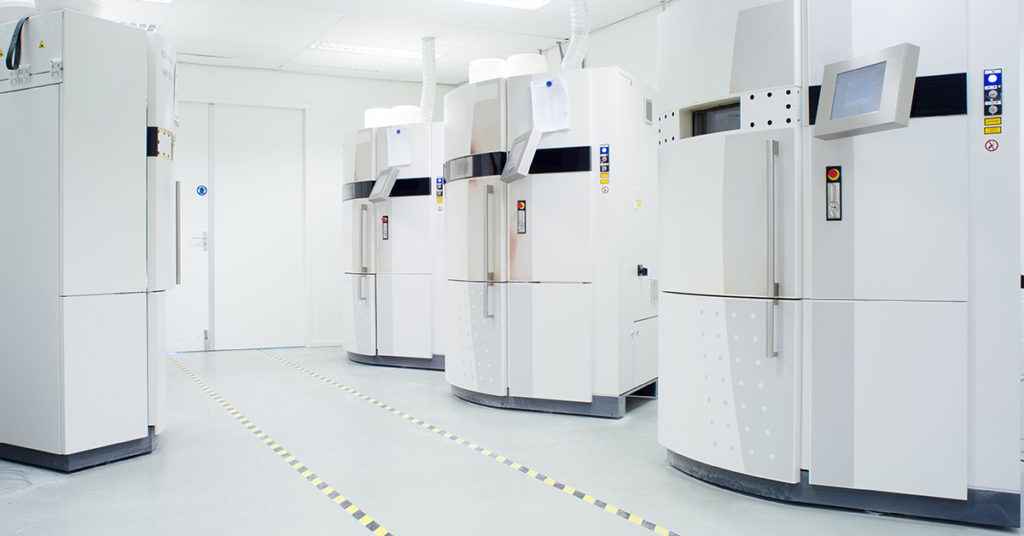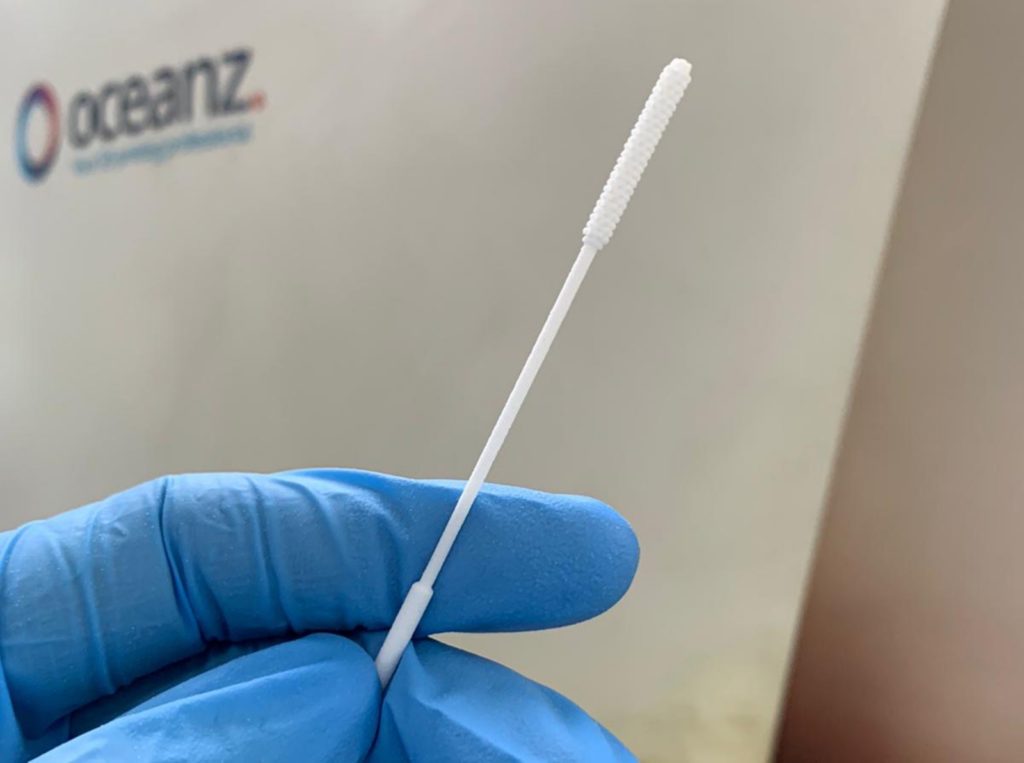3D printing service bureau Oceanz has launched a 3D print service specifically for Dutch hospitals. This service will offer medical models, specifically those used for preoperative planning. But the company is aiming to offer much more than just visual models. We’ve covered Oceanz previously through their efforts to 3D print nozzles for firefighters, food waste, recycled car parts, and statuettes. Now, the company is delving into offering specific solutions for specific verticals with their 3D Medical Models offering.
Offering both metal and polymer 3D printing, the medical modeling process is from start to finish a ISO 13485 validated process and they have a quality management system in place. Oceanz itself is ISO 9001, as well. This means that, from file handling to print, this is a traceable, manageable process that has been vetted.
They specifically want to supply Dutch hospitals with these models and see applications as centering around facial reconstruction surgery. The Netherlands has MKA physicians who specialize in surgery around the jaw and face, analogous to oral and maxillofacial surgeons elsewhere. For this specialty, Oceanz sees opportunities in wafers and molds for reconstructive surgery.
Wafers are used in the mouth to reposition and correctly position the jawline in order to reconstruct or adjust your bite or face. Oceanz also wants to offer onlays for cranioplasty. An onlay is a patient-specific part that helps to cover some void in the face or head for tissue to grow around. For example, a person falling from a motorcycle at high speed without a helmet will get what is informally known as a Kawasaki head. Its sounds very specific, but the phrase is used by surgeons informally to denote someone who has, in fact, had a large part of their skull ground off by scooting over the asphalt for a number of meters. In that case, an onlay will bring back symmetry and cover the void. Grafts may then bring back skin and, to a certain extent, normalcy. I once sat through a lecture specifically on this subject and it was rather harrowing. One other attendee fainted.

An Oceanz Production Facility
For mandibular reconstructions, they aim to make molds and drill guides for CMF surgeries. For orthopedics, they want to offer models of very complex bone trauma and surgical planning for distal radius fractures specifically. Oceanz also provides anatomical models for preoperative planning and surgical guides generally.
The company touts time-savings by surgeons in planning and in the operating theatre as the main advantages. Doctors can upload CT scans directly to the service (this alone will save them a bunch of DICON fun time). Then, a medical engineer will get in touch with them to discuss their needs and the model will be printed.

Oceanz has also previously 3D printed test swabs.
I think that this is a great offering and it seems to me that any and every country should and could have a service of this nature. This means that Materialise may see some competition for some of its core products, such as surgical guides.
While the quality standards and needs will be more or less the same globally, there are a lot of country-specific regulations and standards. For instance, how insurance companies operate, the methods of local doctors, and local regulatory requirements. All of these could give the home field advantage to a local player.
Or we could see specialized players emerge that dominate their field globally, as is the case with medical device manufacturers. At the same time, a number of Dutch hospitals have their own 3D print labs being pioneered by doctors, such as Lars Brouwers.
So, who is going to print surgical guides, anatomical models, and other parts for hospitals? Will it be the hospitals themselves, specialized local companies in each country, or global players?
Or will we see a further segmentation, where preoperative planning items such as anatomical models are 3D printed in the hospital primarily, for example? For that product you could use often use an Ultimaker or similar printer, with cost and turnaround time playing a crucial factor.
For items like surgical guides, more certification is needed and you’d probably want to use larger machines, such as EOS P110. This would need some scale to be affordable and would require a lot of square footage, which is expensive in hospitals. For these types of products, a global player could very well subsist, especially because of the regulatory requirements for these temporary implants. On the other hand, the onus of proof and safety is lower than it would be for a long-term implant, so there may yet be space for relatively undercapitalized players.
Custom CMF type implants or items needed for cranial applications could be very high risk indeed, so a very well-positioned brand could be made either in a county alone, but more probably internationally. These types of procedures are very expensive in all senses of the word, in terms of time from surgeons, effects and risks to the patients, and the spread between the outcomes. This to me points to erring on the side of established players and trust.
All in all, once a player is dominant in these fields nationally, I really don’t see them getting dislodged easily. There are a limited amount of decision makers, limited number of clients, and trust is paramount. So, one could hold onto this market indefinitely, if one continues to perform. On the whole, I think this is a great move by Oceanz into becoming a service that offers specific offerings for high value critical applications in 3D printing.
Subscribe to Our Email Newsletter
Stay up-to-date on all the latest news from the 3D printing industry and receive information and offers from third party vendors.
Print Services
Upload your 3D Models and get them printed quickly and efficiently.
You May Also Like
Consolidation in AM: How 2025 Is Shaping the Industry’s New Normal
The first half of 2025 has been marked by a clear shift in the additive manufacturing (AM) industry. Companies are no longer just focused on developing new tech by themselves....
Etsy Design Rule Change Reduces Selection of 3D Printed Goods
Online marketplace Etsy has implemented a rule change requiring all 3D printed goods on the site to be original designs. The update to the site’s Creativity Standards states, ¨Items produced using...
U.S. Congress Calls Out 3D Printing in Proposal for Commercial Reserve Manufacturing Network
Last week, the U.S. House of Representatives’ Appropriations Committee moved the FY 2026 defense bill forward to the House floor. Included in the legislation is a $131 million proposal for...
Transforming From Tourist to Native: Duro CEO Michael Corr Explains Why the Company Rebuilt its PLM Software on AI
In these early innings of the AI boom, many market analysts have expressed concern that AI spend has gotten too far ahead of the technology’s proven ability to deliver significant...
































